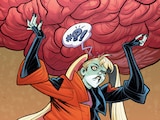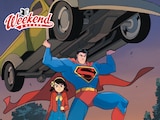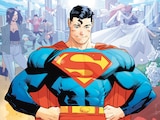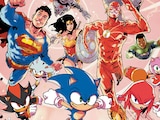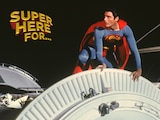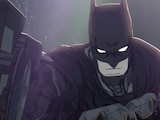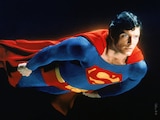June is LGBTQ+ Pride Month and the DC Universe as we know it today features plenty of queer characters to be proud of. From Bunker in Teen Titans Academy to Crush in Crush & Lobo to Renee Montoya and Kate Kane in the Bat books, significant LGBTQ+ characters exist in abundance throughout DC’s ongoing comics. Nearly every current TV show based on a DC book features a prominent queer character. But it wasn’t always so easy for an LGBTQ+ comic book reader to find themselves reflected in the DC Universe. For over fifty years, not a single openly gay superhero could be found on DC’s pages.
This changed in 1988’s "Millennium" event, when the Guardians of the Universe prepared Earth for the next stage of its evolution by endowing cosmic power upon ten individuals who would shepherd humanity into a new era. One of these individuals was Gregorio De La Vega, a gay Peruvian stage magician who coincidentally shares his surname with Zorro. The Guardians elevated De La Vega’s parlor tricks to supreme sorcery, inspiring him to take on the name “Extraño”—the Spanish word for “Strange.”
“Auntie” De La Vega

Created by writer Steve Englehart and artist Joe Staton, Extraño was very open about his queer identity. He tended to dress and speak in an overtly flamboyant manner, insisting all the while that his team members call him “Auntie.” But then, subtlety didn’t really play much of a role in New Guardians, especially when it attempted to address the social issues of the 1980s. After all, this was a series which included a villain named Snowflame who gained powers through snorting cocaine—and another who gleefully spread HIV and called himself the “Hemo-Goblin.” Though well-meaning and intended to reflect a more modern world, New Guardians does not stand the test of time. It was a series which may have stood to benefit from some sensitivity training.
When New Guardians was canceled in 1989, Extraño vanished along with it. But in his wake, many characters even older than he became open about their own identities as gay men. This included Obsidian, Infinity, Inc. member and son of the Green Lantern Alan Scott; Tasmanian Devil, Australian representative of the Global Guardians; and Pied Piper, reformed enemy of the Flash. As awkward in execution as many first steps are, Extraño helped pave the way for more diverse sexual representation throughout the DC Universe.
“No One’s Called Me That in Years—Fewer Lived”

For over 25 years, Extraño enjoyed retirement in obscurity. That changed in 2015, when Justice League of America and Supergirl writer Steve Orlando was called upon to write a limited series which would conclude the New 52 romance between Midnighter and Apollo. A queer author himself, Orlando felt it was time to bring back DC’s original gay character from limbo to help celebrate DC’s first comic headlined by an openly gay couple. Orlando introduces us to a Gregorio De La Vega who acts more demure with age, but who holds no less power. De La Vega demonstrates passing familiarity with Midnighter and even aids Midnighter’s journey into Hell to retrieve his love Apollo from Neron’s clutches. The matured De La Vega alludes to “Extraño” almost as if he were some other man, as far from the person he is today in space as in time. He has made his home in Peru, where he practices powerful magic, and raises a young angelic daughter with his husband, Hugh—heavily implied to be Tasmanian Devil of the Global Guardians.
De La Vega goes on to make an appearance in the final issue of Orlando’s Justice League of America, as part of Vixen’s newly founded proactive “Justice Foundation.” Thanks to Orlando’s reintroduction, De La Vega has returned to a role of prominence in the mystical corners of the DC Universe, recently playing host to one of the Lords of Order in writer James Tynion IV’s Justice League Dark.

As representation of a marginalized group matures, part of the growth process often involves a reckoning with symbols and icons used in the past—whether they come from malice, ignorance, or a simplified view which just doesn’t apply anymore. This reckoning is resolved in one of two ways. They can cast away these symbols and icons, denying their power. Or they can reclaim them, giving them new meaning as they grow alongside the culture. By resurrecting and reinterpreting Extraño for Midnighter and Apollo, Steve Orlando chose the latter and he continues to grow and evolve Gregorio De La Vega as a character in this months LGBTQ+ anthology, DC Pride.
In the 21st Century, a character who was once a flamboyant stereotype is now a proud husband and father, an elder statesman of the community and a source of power, wisdom and respect. Estamos orgullosos de ser Extraño!
Check out Extraño in action alongside his old buddy Midnighter in DC Pride #1, available in comic shops and digital retailers on June 8th! Or check out where his evolution into today's master of mysticism began in Midnighter and Apollo, now available on DC UNIVERSE INFINITE!



